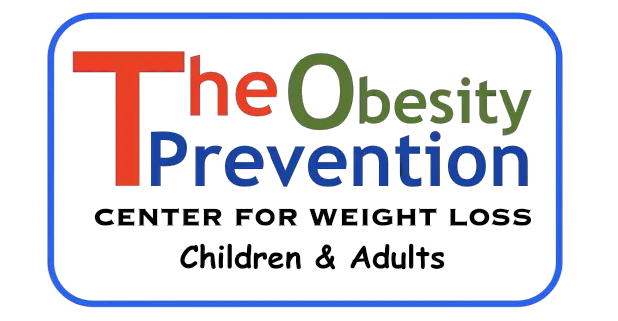Welcome to the insightful world of intermittent fasting, a revolutionary approach to healthy living and sustainable weight loss. I can tell you from my experience as a weight loss specialist that this is one of the lost secrets of weight loss.
This lifestyle adjustment, primarily grounded in meal timing and dietary control, has gained significant traction in recent years. Especially for women, it presents a unique vantange point to reshape their health narrative, ameliorating not just weight management, but overall wellness.
This intrigue thermally peels away the generic exploration of intermittent fasting, diving deep into its diverse methods and peculiar nuances specific to women. It also underlines the importance of balanced nutritional consumption in tandem with training and exercise, and brings you inspiration through success stories of women who have transformed their lives via intermittent fasting. Strap in for an enlightening voyage that could very well springboard your own journey of health exploration and weight loss.
Understanding Intermittent Fasting
Understanding Intermittent Fasting
Intermittent fasting, also known as “IF,” is a popular eating approach used worldwide for various reasons, including weight loss, improved health, and longevity. The concept of Intermittent fasting involves cycling between periods of eating and fasting. Certain approaches restrict eating to a specific time window each day(like 8-hour eating window and 16-hour fasting), while others involve fasting for 24 hours, twice a week. It’s not a diet plan per se, but more of an eating pattern.
The Science Behind Intermittent Fasting
The science behind intermittent fasting revolves around the functions of the body during eating and fasting modes. When you eat, the body spends a few hours processing the food, absorbing nutrients, and generating energy. During this process, the body is in the “fed” state and finds it challenging to burn fat as insulin levels are high. After this, the body enters the “fasting” state where insulin levels drop, and the body begins to burn the stored fat for energy.
Why It Works for Women’s Weight Loss
Intermittent fasting works perfectly for women’s weight loss for several reasons. Besides the primary fat-burning aspect, intermittent fasting can lead to reduced caloric intake, as this method naturally helps to limit the food consumption period. Essentially, less eating time often equals fewer calories consumed. Such caloric restriction, even without changing the type of food consumed, can lead to weight loss.
Many women also find intermittent fasting easier to follow than traditional calorie-restricted diets. Eating within a defined window removes the need to count calories and fret over ‘good’ or ‘bad’ foods. Instead, the focus shifts from what to eat to when to eat.
Genetics and Hormones factor into every aspect of our lives, including weight loss. Intermittent fasting can help regulate hormones such as insulin, ghrelin (the hunger hormone), and leptin (the satiety hormone), leading to better hunger control and increased metabolic rate. It can also boost human growth hormone (HGH) levels, which play a key role in fat loss and muscle gain.
The Benefits of Intermittent Fasting
Beyond weight loss, many proponents of intermittent fasting highlight the other advantages this eating pattern can offer. It may help to improve metabolic health by enhancing body functions like blood sugar levels, blood pressure, cholesterol levels, and inflammation markers. It can help boost mental clarity and concentration, increase energy, and potentially improve longevity.
Research has also suggested that intermittent fasting may play a role in preventing diseases, including heart disease, type 2 diabetes, and certain types of cancers. It’s crucial, however, to note that the majority of these studies have been carried out on animals, and human research is still ongoing.
Understanding Intermittent Fasting for Weight Loss in Women
Intermittent fasting proves to be a strategic approach to weight loss for women, but like every health regimen, it requires careful consideration and attention to one’s body. Women are particularly susceptible to hormonal imbalances that can be disrupted by intermittent fasting, potentially leading to issues such as fertility complications, irregular menstrual cycles, and mood fluctuations.
As such, it is advisable to adopt intermittent fasting gradually and moderately, paying close attention to the body’s response and making necessary modifications.
It’s crucial to note that intermittent fasting may not be a suitable choice for everyone. Women who are expectant, dealing with underlying health conditions like diabetes, or have a history of eating disorders, should always seek the advice of a healthcare professional before initiating an intermittent fasting regime.

Intermittent Fasting Methods
Exploring the 16/8 Method
One of the most accessible and popular methods for incorporating intermittent fasting into daily life is the 16/8 method or Leangains protocol. This model involves fasting for a continuous 16-hour window and consuming meals within the remaining 8-hour span.
For instance, an individual might opt to eat between noon and 8 p.m. and fast from 8 p.m. until noon the next day. The specific timing can be adjusted to meet personal schedules and preferences. For many women, the 16/8 method seems less intimidating as a large portion of the fasting hours occur during sleep.
The 16/8 method can aid in women’s weight loss by restricting the window of calorie intake, naturally leading to a calorie deficit. It also can improve insulin sensitivity, which is a critical factor in weight loss. Nonetheless, to maintain overall wellbeing, it’s crucial to consume nutrient-rich foods within the eating window to prevent any potential nutrient deficiencies due to meal skipping.
Eat-Stop-Eat Method
The Eat-Stop-Eat method, developed by fitness expert Brad Pilon, involves fasting for a 24-hour period once or twice per week. This method is often considered more advanced and requires a higher level of discipline due to extended fasting periods. However, it provides a larger break from eating, which can result in a larger calorie deficit.
The Eat-Stop-Eat method supports weight loss by significantly cutting weekly caloric intake. Evidence suggests it may also enhance metabolic health, though research is preliminary. The challenge is to avoid overeating before and after the 24-hour fast. Ensuring you maintain a balanced, nutritious diet when not fasting is also vital to avoid nutrient deficiencies.
Alternate-Day Fasting
Alternate-day fasting is another method of intermittent fasting that involves rotating fasting days and eating days. On the fasting days, some people opt for a complete fast sans any calorie intake, while others prefer to consume 500-600 calories.
Studies have shown that alternate-day fasting can be an effective method for weight loss in women, with participants losing 3–7% of their body weight over a 2–3 month period. Further, some research suggests that it may help improve heart health. Nevertheless, the difficulty lies in completely abstaining from food every other day. Therefore, this method may be more suitable for those with higher willpower and more experience in fasting.
5:2 Diet
The 5:2 diet, or the Fast Diet, involves eating normally for five days of the week and restricting calorie intake to 500-600 calories on two non-consecutive days. This is an easier method for those who find fasting for entire days difficult.
Studies suggest that the 5:2 diet can contribute to significant weight loss in women, improving metabolic health, and reducing insulin resistance. However, like the other methods, it’s crucial that on non-fasting days, a regular, healthy diet is followed to ensure adequate nutrition intake.
Implementing weight loss strategies, specifically for women, requires a high degree of individual commitment. The success rate is determined by one’s ability to integrate these methods into their daily life and maintain a balanced, nutritious diet during non-fasting intervals. However, consulting with a healthcare professional or dietitian before starting intermittent fasting methods is strongly advised.

Intermittent Fasting for Women
Delving into Intermittent Fasting for Women
Intermittent Fasting, which involves alternating blocks of eating and fasting, has been widely recognized as a great way to lose weight and boost metabolic health. Yet, it’s essential to understand that the impact can vary between genders, due to hormonal differences.
The world of intermittent fasting involves various methods such as the 16/8 technique, the 5:2 diet and the Eat-Stop-Eat approach. For women, particularly, careful consideration is required in selecting an intermittent fasting plan due to hormonal fluctuations caused by the menstrual cycle.
Hormonal Differences Influence Fasting Results
Fasting, especially long-term fasting, can trigger a starvation response in women’s bodies, potentially leading to menstrual disruptions. Certain hormones such as ghrelin, insulin, leptin and the thyroid hormones are affected by fasting.
These hormones play a crucial role in women’s menstrual cycles, hunger levels, and metabolic functioning. A sudden or severe change in eating patterns, such as intermittent fasting, can disrupt hormonal balances and negatively impact overall health.
Avoiding Menstrual Cycle Disruptions
To avoid potential risks and menstrual cycle disruptions, women should consider shorter fasting periods. The 14/10 method, involving 14 hours of fasting and a 10-hour eating window, may be better suited for women. Starting slow, such as fasting one day per week or month, may also be beneficial.
Keeping Nutrient Intake in Check
During eating periods, women should focus on consuming nutrient-rich foods. A balanced diet with adequate protein, healthy fats, and fiber during feeding times is crucial. Keeping nutrient intake in check can stave off nutrient deficiencies which are another potential risk for women practicing intermittent fasting.
Importance of Monitoring and Adjustment
Because of the potential hormonal impacts, women should monitor their hormonal health while practicing intermittent fasting. This can be done by tracking menstrual cycles and noting any changes, getting regular checkups, and paying attention to hunger and energy levels. If women observe any negative effects or feel unwell, they should consider modifying or stopping their fasting regimen.
Intermittent Fasting and Weight Loss for Women
Despite potential risks, intermittent fasting can lead to significant weight loss and improve metabolic health in women. As body fat is reduced, insulin sensitivity can increase, improving overall metabolic function. This could potentially lead to reductions in the risk of developing metabolic syndrome and type 2 diabetes.
However, a successful weight loss journey with intermittent fasting is determined by overall calorie intake and the quality of food consumed during eating periods. Women should aim for a nutrient-rich diet that supports their specific health and wellbeing needs.
It’s important to view intermittent fasting not as a quick fix to weight problems for women, but rather a tactic to be incorporated into a healthier lifestyle. Women who are thinking about integrating this method into their routine should first seek the guidance of a healthcare professional or a certified dietitian. These specialists can discuss potential risks and offer personalized advice suited to unique health requirements.

Food & Nutrition During Fasting
Delving into Intermittent Fasting for Weight Loss in Women
Intermittent fasting is a nutrition strategy that alternates between periods of eating and fasting. It has emerged as a popular practice for weight loss and enhancing health. By adhering to a thoughtfully planned eating pattern during non-fasting periods, women can potentially achieve their weight loss aspirations within the framework of this fasting strategy.
The Principle of Intermittent Fasting
The principle of intermittent fasting is not about starving but planning your meals wisely during the feeding phase. This dietary plan does not necessarily indicate what foods to eat, but rather when you should eat them. The most common methods include daily 16-hour fasts or fasting for 24 hours, twice per week.
Significance of Healthy Meal Planning During Intermittent Fasting
While intermittent fasting does provide a certain degree of freedom during the feeding windows, it is a misconception that one can eat anything and still expect to meet their weight loss goals. Your food choices during non-fasting periods are critical to the effectiveness of intermittent fasting. High caloric, nutrient-empty foods such as junk food can adversely affect weight loss efforts and overall health.
The Importance of Nutrient-Rich Foods in Achieving Weight Loss Goals
During the eating windows of intermittent fasting, it is essential to consume nutrient-dense foods that provide necessary vitamins, minerals, and other nutrients. Proper meal planning is vital; focusing on lean proteins, whole grains, fruits, vegetables, and healthy fats can nourish your body, while still aiding in weight loss. Consuming a balanced diet can prevent nutrient deficiencies and maintain energy levels, making the fasting periods more manageable.
The Role of Hydration in Intermittent Fasting
Hydration plays a significant role in intermittent fasting for weight loss. Women should ensure adequate hydration during both fasting and non-fasting periods as it aids in maintaining essential bodily functions. Moreover, staying hydrated can help regulate hunger and fullness cues, preventing overeating during feeding windows.
Impact of Intermittent Fasting on Metabolism
Intermittent fasting for weight loss can alter metabolisms. During fasting periods, your body learns to use its stored energy effectively. After the body consumes the carbs stored in your liver as glycogen, it starts to burn fat for energy. This switch benefits weight loss as the body becomes efficient at fat burning.
Considerations for Women While Implementing Intermittent Fasting
It’s important to remember that each person’s experience with intermittent fasting can vary. Women, particularly those who are pregnant, breastfeeding, or have a history of eating disorders or certain medical conditions may need to take extra caution with intermittent fasting. It’s always recommended to consult a healthcare provider or a dietitian before starting any new dietary plan, including intermittent fasting.
Intermittent fasting for weight loss in women can indeed yield positive results. By consuming a balanced, nutrient-dense diet during the eating window, ensuring adequate hydration, and acknowledging the metabolic shifts that occur with fasting, the weight loss objective can be met successfully. However, the experience is unique to each woman, hence it is vital to stay attuned to your personal bodily responses and secure professional guidance when necessary.

Training & Exercise During Intermittent Fasting
Understanding Your Body and its Responses to Exercise During Intermittent Fasting
An integral component of intermittent fasting for women’s weight loss involves incorporating physical activity during fasting intervals. It is vital to comprehend how your body operates during a fast, in order to maximize the benefits of your workout sessions.
When fasting, your body transitions into a state of ketosis, a metabolic phase where fat takes over carbohydrates as the primary source of energy production. This process enhances your body’s capacity to burn fat during workouts, subsequently aiding weight loss.
The Best Types of Exercise During Fasting
High-intensity workouts such as strength training, CrossFit, or HIIT are better suited when you are not fasting. These rigorous activities can lead to muscle loss if performed during a fasted state due to the intense energy requirements not being adequately met.
On the flip side, low-intensity steady-state (LISS) workouts, such as walking, cycling or yoga, can be beneficial during a fasting window. These types of exercises do not use up as much energy and could potentially aid in fat burn, making them ideal for those on an intermittent fasting plan.
Timing Your Workouts Around Your Fasting Schedule
Your exercise regimen during intermittent fasting should be strategically timed around your fasting and eating windows. Many experts suggest that the most effective time to exercise is just before your first meal of the day. This is because your body is still in a state of fat burning from the fast, which is then accelerated by the exercise.
However, if training during a fasted state leaves you feeling weak or lightheaded, it is advisable to shift your workout sessions to your feeding window. Over time, you may also gradually condition your body to tolerate more intense workouts during fasting periods.
Safety Precautions During Fasting Workouts
While intermittent fasting for women’s weight loss can be a powerful tool, it’s of utmost importance to listen to your body’s signals. If you’re new to fasting, start with lighter exercises and gradually increase the intensity to see how your body reacts.
Hydration is key during fasting workouts. Even though you are fasting, drink plenty of water to prevent dehydration, particularly during and after workout sessions. If you choose to work out during your fasting window, it’s still crucial to replenish lost electrolytes with zero-calorie beverages or supplements.
Avoid pushing your body to the extreme. If you sense excessive fatigue, dizziness, or other health concerns, stop exercising immediately and consult a healthcare professional. Remember, the ultimate goal is to improve your health and well being through intermittent fasting and exercise, not to harm it. It’s essential to find a balance between your fasting regimen, your physical activity, and your body’s needs.
Starting with Professional Guidance
Embarking on intermittent fasting for weight loss ideally begins with professional guidance. A fitness trainer or a nutrition expert can craft an optimal exercise and eating plan adhering to your chosen fasting schedule. They can further monitor and tweak your plan as necessary, anchoring it on your body’s specific responses.

Success Stories & Results
The Encouraging Weight Loss Tale of Sarah
Sarah’s transformation journey commenced at her heaviest, a period marked by struggles with self-perception and self-confidence. After a series of unsuccessful dietary plans, she opted to test intermittent fasting (IF). Choosing an 8-hour feeding window between 12 PM and 8 PM, Sarah began her journey into IF. The journey started rough, with initial hunger pangs and headaches, but, through her determination, she started recording significant improvements.
One month in, and the first major milestone was achieved; Sarah had lost 10 pounds. Besides shedding weight, she reported feeling more alert, focused, and teeming with energy during fasting hours. Witnessing these positive changes month after month motivated Sarah to adhere firmly to her chosen lifestyle.
Challenges and Successes of Mary with Intermittent Fasting
Mary’s journey began after her doctor warned her about potential health issues due to her weight. Determined to improve her health, she embarked on an IF journey. Choosing the 5:2 fasting method, she allowed herself to eat normally for five days while significantly restricting her intake for two.
The first few weeks were tough for Mary. She had to adjust to the idea of fasting and how it influenced her daily life. However, her determination helped her overcome these initial struggles. Over time, her body got used to the fasting schedule and she began losing weight.
After six months, Mary noticed not just a reduction in her weight, but also improvements in her blood pressure and cholesterol levels. Her doctor was equally impressed, and her success served as motivation for her to continue with this lifestyle change.
An Inspiring Transformation: Kim’s Tale of Success with IF
Kim’s experience was different. Having been thin all through her youth, gaining weight as she aged was a shock to her system. Kim decided to try the 16:8 method of intermittent fasting after hearing about its benefits. She chose an eating window of 10 AM to 6 PM.
The toughest part for Kim was giving up her late-night snacks. However, she pushed through and stayed committed to her schedule. It wasn’t just her eating window that changed; Kim also started to make healthier food choices.
The outcome was remarkable. After a month, she started feeling changes in her energy levels. Kim said she had never felt more alive. After 3 months, she could visibly see changes in her weight and was receiving compliments everywhere she went. Within a year, Kim had lost over 50 pounds. But more than the weight loss, she talked about an increase in confidence and improved overall health.
All these women’s stories are a testament to the potential benefits of intermittent fasting. They experienced not only weight loss but also improved energy, better concentration, decrease in blood pressure and cholesterol.
Their stories highlight that while challenges exist during the initial transition, persistence and commitment can lead to success. Ultimately, such success stories can provide motivation and real-life practical insights into the effectiveness of intermittent fasting as a method for weight loss.

Embracing intermittent fasting as a pathway to weight loss is an experience that transcends merely skipping meals. It’s an unveiling of a new way of life that requires discipline, a solid sense of understanding of one’s body, and most importantly, a commitment to health.
The fantastic success stories are an inspiration to all women who aspire to start this journey. Be it the 16/8 method, Eat-Stop-Eat, alternate day fasting, or the 5:2 diet, the road to weight loss through intermittent fasting is a widely accessible one. The indelible imprints of this exploration will have a profound bearing on making informed decisions regarding intermittent fasting. So, step into the world of fasting, balance your nutrition, be intentional about your exercises, listen to your body, and remember: the journey to sustainable health and weight loss isn’t a sprint, it’s a marathon.
Thank you for reading this post, don't forget to subscribe to our free newsletter
!
